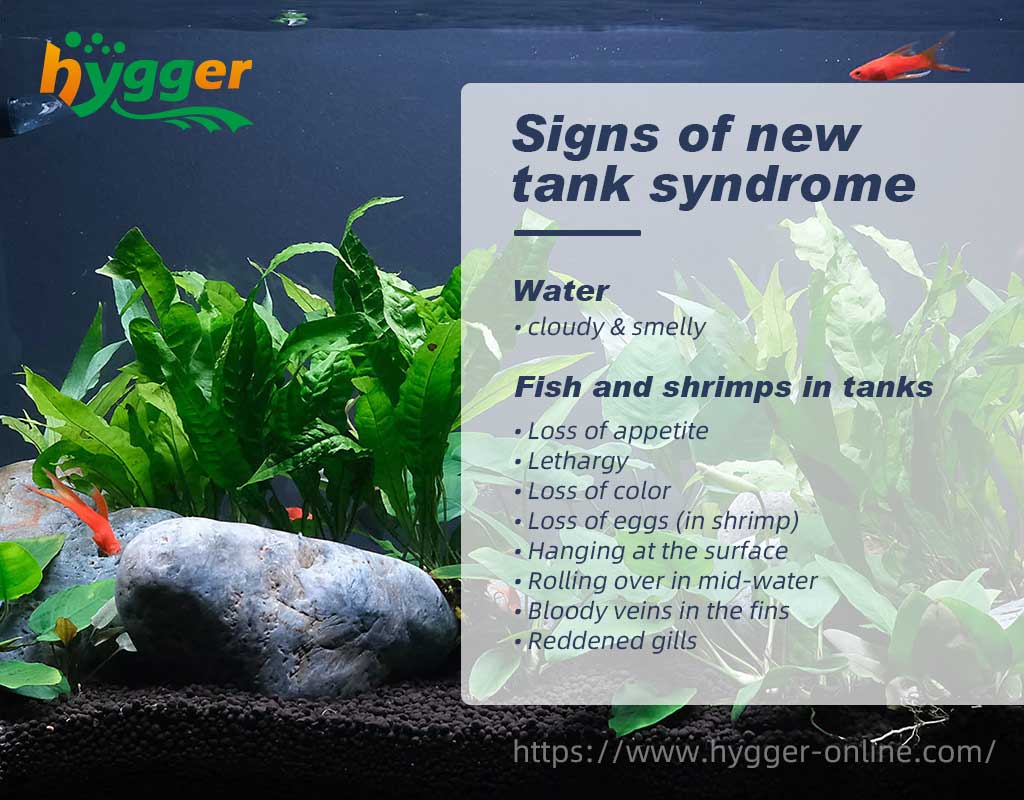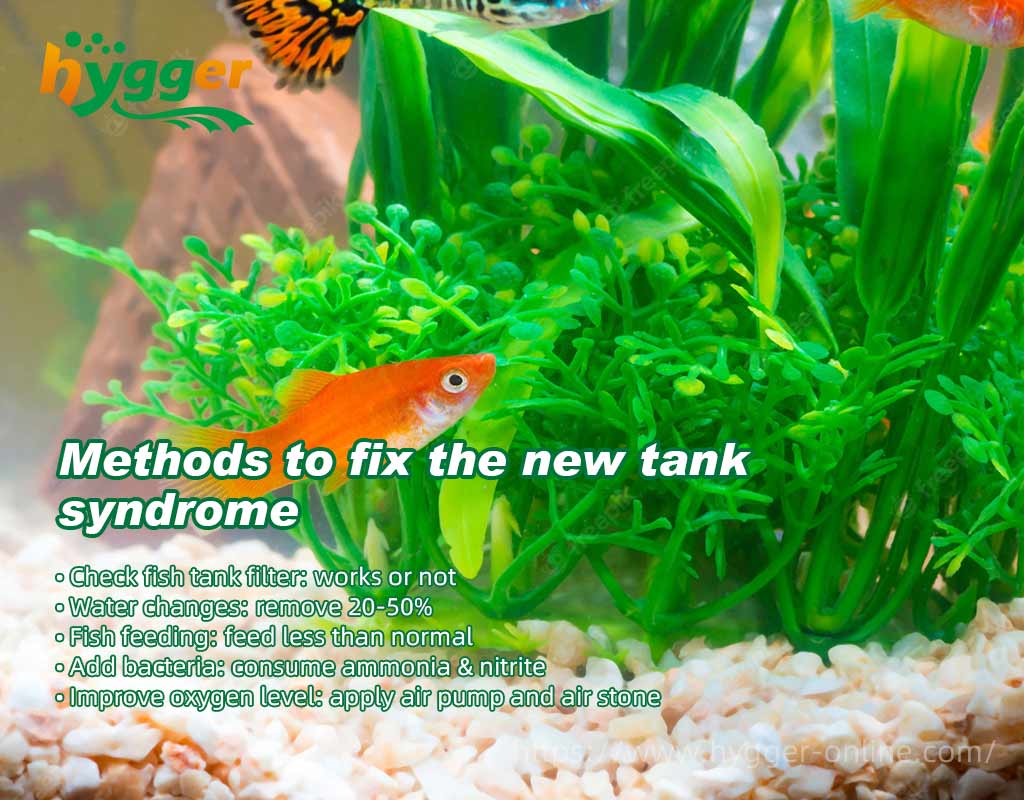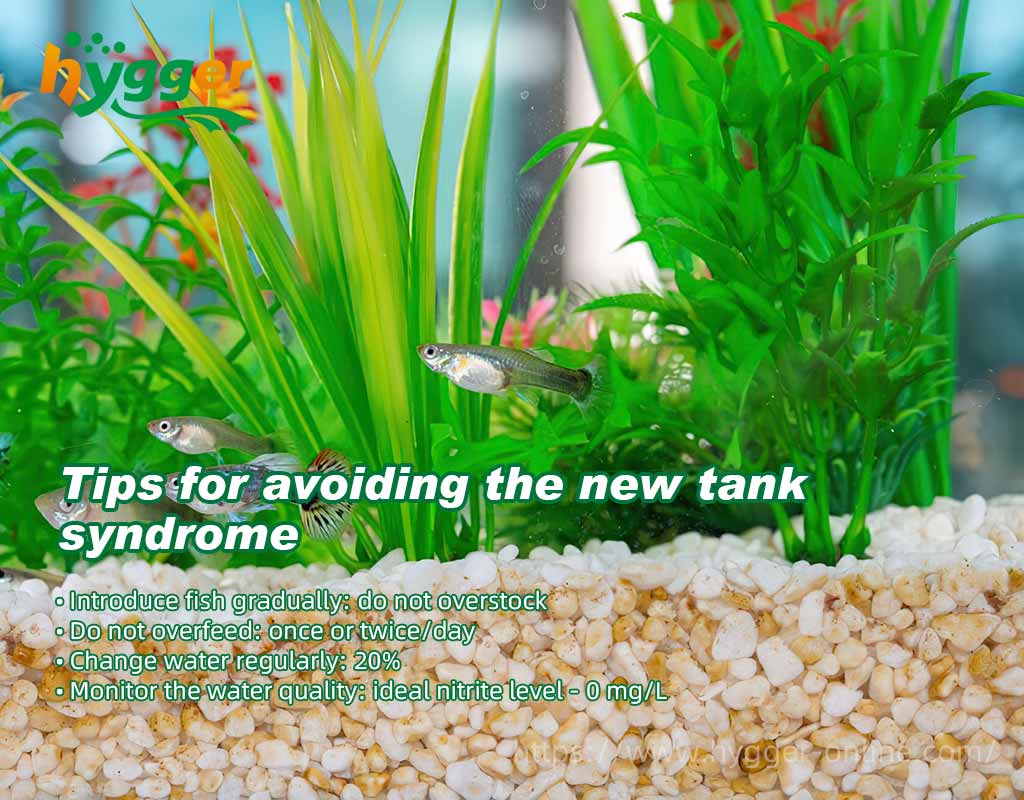Solve The New Tank Syndrome Problem
Have you ever set up a new tank by yourself? And do you know what should you pay attention to? Anyways, there is one problem you should notice when you establish a new tank – that is the new tank syndrome, also abbreviated in NTS. If you have not heard about it before, do not worry, this article will share some information about the new tank syndrome. Let’s get started!
Content Table
What is new tank syndrome?
The new tank syndrome is the syndrome of fish and shrimp poisoning, which is because the undeveloped nitrate bacteria groups can not meet the needs of the nitrogen cycle, and then lead to the growth of toxic substances, including ammonia and nitrite. It means the rise of the ammonia and nitrite levels in the water. And it not only happens in the start periods of new tanks, but other situations may arise the new tank syndrome, including periods after disease treatments and after changing and cleaning filters. The former is not beneficial to bacteria, and the latter would remove useful bacteria. In summary, the new tank syndrome will happen when the ammonia and nitrite levels reach high.
Signs of new tank syndrome
If the new tank syndrome occurs, the water in aquariums will be with high levels of ammonia and nitrite. But they are clear and colorless, so they need a test kit to detect. Besides, the water of aquariums will become cloudy and smelly. Moreover, your fish and shrimp in tanks will show signs, including loss of appetite, lethargy, loss of color, loss of eggs (in shrimp), hanging at the surface, and rolling over in mid-water. If poisoned severe, there will be bloody veins in the fins and reddened gills. If you notice the above signs, it is better to test your aquarium water as soon as possible.

How long does new tank syndrome last?
The new tank syndrome lasts until the proper nitrogen cycle is established by the useful bacteria. It may take about 2-12 weeks or even longer if there are too many fish. In a word, the size of aquariums and the number of bacteria available in fish tanks determines how long it lasts.
Besides, some factors would bring an impact on the process.
- Oxygen level: If there is low oxygen availability, it would last longer.
- Temperature: If the temp is lower than 70℉, it would take longer to cycle.
- Cleaning of filter media: The incorrect cleaning would delay the process.
How to speed up new tank syndrome?
Provided that the new tank syndrome appears, how can we fix it? There are some tips for you to save your cute fish from the syndrome.
- Check the filter
You should check the filter for fish tank first to make sure whether it works. Then, you should check when you clean it last time because if the filter is clogged, it would be unable to remove waste.
- Water test and changes
You should also test your water in tanks. The result will provide references for how much water you need to change. The ideal levels of ammonia and nitrite are zero. And the level of ammonia should not exceed 1 ppm, while the level of nitrite should keep less than 1.5 ppm. On the other hand, it needs a complete nitrogen cycle.
Water change could reduce the level of ammonia. You can remove 20%-50% of the water in tanks, and then add clean and dechlorinated water.
- Fish density and feeding
If the tank syndrome does not get better, it is recommended to put some fish in another tank to lower the fish density. Because it is difficult to reestablish a nitrogen cycle in overstocked aquariums. Besides, you should feed them less food for some days. That is because the fish would refuse to feed, if there is too much food for them, the food will be accumulated.

- Clean the substrate
The uneaten food and wastes may be trapped in the substrate, and then decomposed to ammonia. If the level of ammonia improves, the established cycle may be unable to meet the requirements of transferring the toxic substances. So it is better to clean the substrate through and through to eliminate ammonia. By the way, a gravel vacuum is a good tool to help you clean the substrate well.
- Add bacteria
Adding nitrifying bacteria is a suitable option. Besides, you can also add sine filter bacteria, which could consume ammonia and nitrite. On the other hand, you should add the bacteria after dechlorinating the water.
- Oxygen level
You can use an air pump and air stone to improve oxygen level. It will be beneficial to fish and bacteria. As mentioned above, if there is low oxygen availability, the new tank syndrome would last longer. So improving the oxygen level is a method to cure the syndrome quickly.
- Speeding cycle
It is one method to speed up the aquarium cycle and lighten the new tank syndrome. But it is suitable before feeding fish. You can apply sand, gravel, or decorations to form your new aquarium. On the other hand, keep the pH neutral and remain at the temperature of 83-87℉. Moreover, if there are fish in tanks, do not change the water condition suddenly, because it will bring a bad impact on them.
Reminder
Congratulations! You have learned more about the new tank syndrome! By the way, there are tips for avoiding the new tank syndrome.

- Introduce fish gradually
If the tank is no ammonia and nitrate, you can add a few fish at one time, but do not overstock.
- Do not overfeed
It is suitable to feed your fish once or twice a day during the first primary months. And you should remove the uneaten food, or the food will rot.
- Change water regularly
It is better to change 20% of the water once a week in a new tank. By doing so, the ammonia and nitrite will be diluted. Periods later, you can change 25% of the water once a month after the filtration matures.
- Monitor the water quality
It is recommended to monitor the water quality and write down the results. Because there are invisible problems. The nitrite is toxic. If it is at a high level, it would be fatal to fish. When the level of nitrite in tanks is 0.5mg/L, you should take actions to deal with it. If the level of nitrite is over 0.5 mg/L, it would be harmful to fish.
Finally, thank you for your reading. Hope this article has provided useful information for you!
